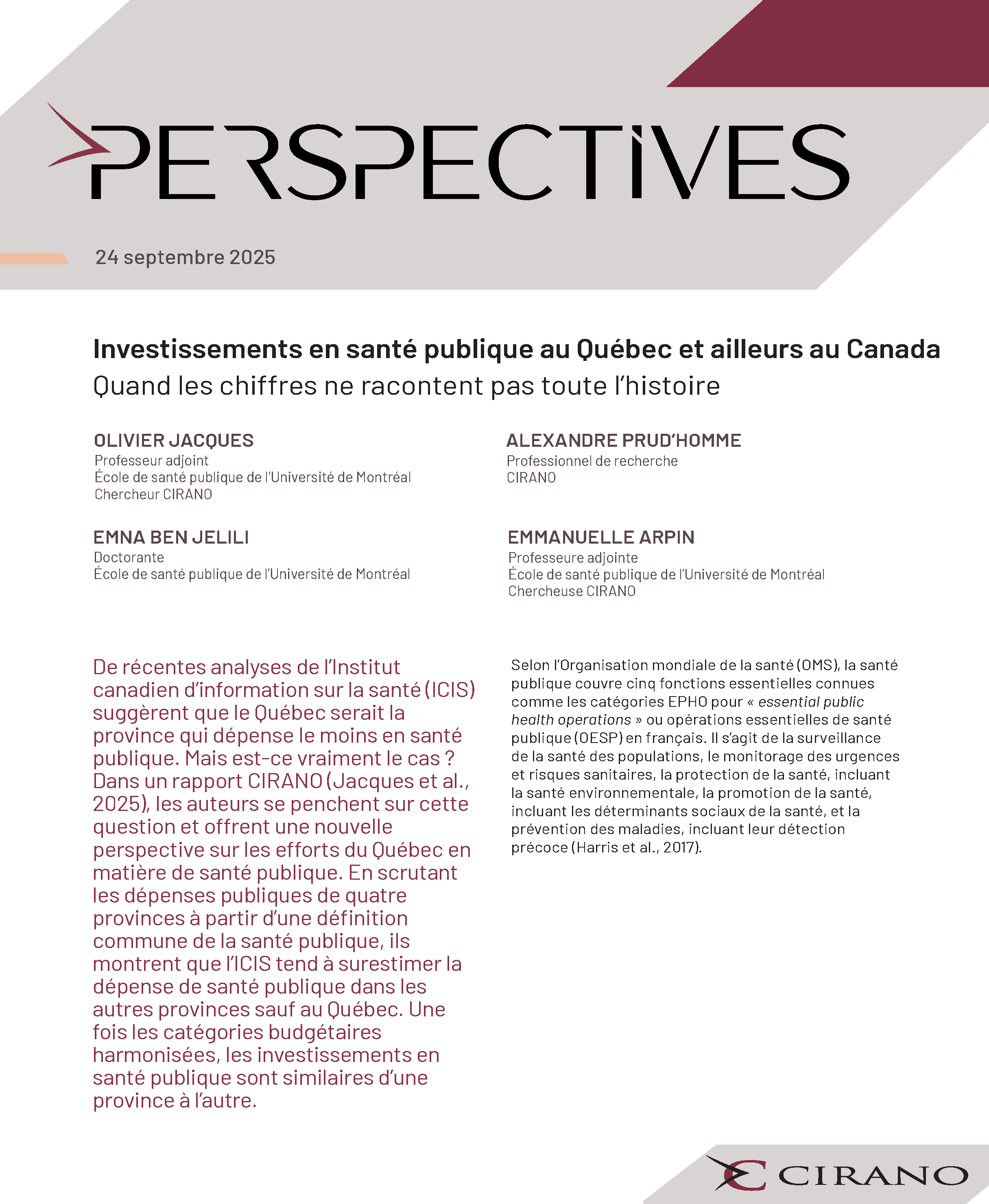Une meilleure répartition des activités entre les travailleurs de la santé : État de la situation, contraintes et facilitants
The organization of Quebec's health care services is based on a group of health care workers called upon to collaborate in order to meet the health needs of the population. Sharing care activities and making better use of resources are seen by many as part of the solution to the problems of efficiency in the health care system.
Based on interviews with key stakeholders, this study examines the current state of shared care activities among physicians, nurses and orderlies and identifies the environmental factors that influence the distribution of activities among them. The results show that, despite major advances in recent years, there are gaps in the sharing of activities between these health care workers and that the deployment of nursing practices is not optimal. The main organizational constraints are related to the roles, structures and complex nomenclature of the nursing profession, the lack of knowledge of the competencies associated with the different types of workers, difficulties in integrating certain resources, and a lack of supervision and support to carry out the shared activities .
The study also identifies the care-related activities that have the potential to be transferred or delegated in the current context of care environments experiencing relative labour shortages, as well as the conditions and strategies that promote the implementation of these ways of doing things. Finally, it provides elements for reflection on the scope and gains for the health system of new organizational scenarios associated with more efficient activity sharing. The benefits are mainly at the level of (1) healthcare workers, increasing their motivation and satisfaction, (2) the organizational level by promoting interdisciplinary collaboration and optimizing existing resources, (3) the level of care by increasing complementarity, accessibility and continuity, and (4) the level of the system by making it more efficient in its ability to meet patients' needs.




